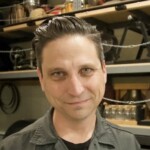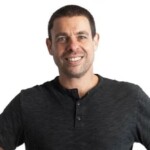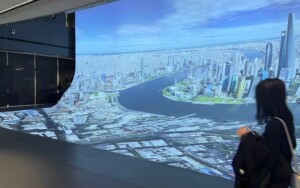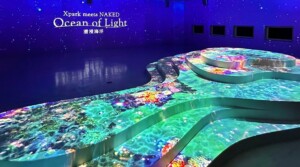Franklin R. Chang-Dìaz, Kevin P. Chilton and Charles J. Precourt will join an elite group of American space heroes as they are inducted into the U.S. Astronaut Hall of Fame® during a ceremony at the Kennedy Space Center Visitor Complex on Saturday, May 5, 2012. They will be welcomed to the ranks of legendary space pioneers like Neil Armstrong, John Glenn, Alan Shepard, Jim Lovell, Sally Ride and John Young – distinguished members of the Hall of Fame.
Related: Kennedy Space Centre: Groundbreaking Ceremony Held for $100 Million Home of Space Shuttle Atlantis / New Master Plan for NASA’s Kennedy Space Center Visitor Complex
This is the eleventh group of space shuttle astronauts named to the U.S. Astronaut Hall of Fame. Earlier inductees represent the Mercury, Gemini, Apollo, Skylab and Apollo-Soyuz programs. The addition of Dr. Chang-Dìaz, a veteran of seven space shuttle flights who has logged more than 1, 601 hours in space; Gen. Chilton, the pilot on space shuttle Endeavour’s maiden voyage and the commander of STS-76; and Col. Precourt, who served as shuttle mission specialist, pilot and spacecraft commander, will bring the number of space explorers enshrined in the Hall of Fame to 82.
 During his 25 years in the astronaut program, Dr. Franklin R. Chang-Dìaz (right) became one of only two astronauts to fly on seven space shuttle missions. He logged more than 1, 601 hours in space, a total that includes 19 hours and 31 minutes accumulated during three spacewalks. Chang-Dìaz’ missions aboard the space shuttle include STS-61-C, STS-34, STS-46, STS-60, STS-75, STS-91, and STS-111.
During his 25 years in the astronaut program, Dr. Franklin R. Chang-Dìaz (right) became one of only two astronauts to fly on seven space shuttle missions. He logged more than 1, 601 hours in space, a total that includes 19 hours and 31 minutes accumulated during three spacewalks. Chang-Dìaz’ missions aboard the space shuttle include STS-61-C, STS-34, STS-46, STS-60, STS-75, STS-91, and STS-111.
Chang-Dìaz’s missions into space include numerous scientific achievements. As a crew member onboard STS-61-C, Dr. Chang-Dìaz participated in the deployment of the SATCOM KU satellite, operated the materials processing laboratory MSL-2, and conducted astrophysics experiments. On STS-34, the crew aboard Atlantis successfully deployed the Galileo spacecraft on its journey to explore Jupiter. The crew on this mission also mapped atmospheric ozone levels with the Shuttle Solar Backscatter Ultraviolet Instrument (SSBUV), and performed research on the effects of microgravity on plants.
Chang-Dìaz’s STS-46 mission resulted in the deployment of the European Retrievable Carrier (EURECA) satellite, and the first test flight of the Tethered Satellite System (TSS). In 1994, Chang-Dìaz flew on STS-60, a mission which included the first flight of the Wake Shield Facility (WSF-1), and the second flight of the Space Habitation Module-2 (Spacehab-2). This mission also is noteworthy because it was the first joint U.S./Russian Space Shuttle mission on which a Russian Cosmonaut was a crew member.
When Chang-Dìaz returned to space on STS-75, the Tethered Satellite System was once again one of the primary payloads on the mission. During this flight, the TSS successfully demonstrated the ability of tethers to produce electricity. Chang-Dìaz also flew on STS-91, in which Discovery spent four days docked to the MIR Space Station, and on STS-111, his final mission, in which he installed the Mobile Base System on the International Space Station and he replaced the failed wrist joint on Canadarm II.
Chang-Dìaz retired from NASA in July 2005 and then founded Ad Astra Rocket Company, which is dedicated to the development of advanced plasma rocket propulsion technology. Ad Astra’s efforts have led to the production of a rocket that has the theoretical capability of carrying a manned mission to Mars in just 39 days.
 Three-time space shuttle astronaut Kevin P. Chilton, (Gen, USAF, Ret.), (left) has logged more than 704 hours in space. He has served as the pilot on STS-49 and STS-59, and as the commander of STS-76.
Three-time space shuttle astronaut Kevin P. Chilton, (Gen, USAF, Ret.), (left) has logged more than 704 hours in space. He has served as the pilot on STS-49 and STS-59, and as the commander of STS-76.
In 1992, Chilton launched aboard STS-49, the maiden voyage of space shuttle Endeavour. During the mission, the crew performed a record four extravehicular activities (EVAs) to retrieve, repair and deploy the International Telecommunications Satellite (INTELSAT), and to demonstrate and evaluate numerous EVA tasks to be used for the assembly of Space Station Freedom, the proposed orbiting laboratory that served as the forerunner for the International Space Station. Upon its return to Edwards Air Force Base, after 213 hours in space and 141 earth orbits, the crew conducted the first test of Endeavour’s drag chute.
A later mission, STS-59, spent 11 days in space and added more than 269 hours and 183 orbits to Gen. Chilton’s totals. Chilton served on STS-59 as the pilot, and this mission featured the deployment of the Space Radar Laboratory (SRL). SRL consisted of three large radars and a carbon monoxide sensor that were used to study the Earth’s surface and atmosphere.
In 1996, Chilton commanded STS-76, which featured the third docking mission to the Russian space station Mir. Following rendezvous and docking, the transfer of a NASA astronaut to Mir for a five month stay was accomplished to begin a continuous presence of U.S. astronauts aboard Mir for the next two-years. This mission also featured the first spacewalk from the space shuttle while docked to Mir, and it featured the first flight of Kidsat, an electronic camera controlled by classroom students via a Ku-band link between Johnson Space Center Mission Control and the space shuttle.
After an 11-year career with NASA, Chilton returned to the Air Force, serving on the Air Force Space Command Staff, the Air Staff, the Joint Staff, and commanding the 9th Reconnaissance Wing, 8th Air Force, Joint Functional Component Command for Space and Global Strike and Air Force Command. Chilton has most recently served as Commander, United States Strategic Command, Offutt Air Force Base, Nebraska, a position in which he was responsible for the global command and control of U.S. strategic forces to meet decisive national security objectives. Chilton retired from the Air Force on February 1, 2011, having attained the rank of Four-Star General.
 Charles J. Precourt, (Col., USAF, Ret.), (right) spent 15 years in the space program, a period of service which saw him participate on four space flights and log a total of 932 hours in space. Precourt served as mission specialist on STS-55, as pilot on STS-71, and as commander on STS-84 and STS-91.
Charles J. Precourt, (Col., USAF, Ret.), (right) spent 15 years in the space program, a period of service which saw him participate on four space flights and log a total of 932 hours in space. Precourt served as mission specialist on STS-55, as pilot on STS-71, and as commander on STS-84 and STS-91.
STS-55 Columbia launched in April of 1993 and during this mission nearly 90 experiments were conducted to investigate life sciences, material sciences, physics, robotics, astronomy, the Earth and its atmosphere. On his second flight, STS-71, Precourt piloted the first space shuttle mission to dock with the Russian space station, Mir. For this mission, space shuttle Atlantis required specific modifications to carry the docking system used on this mission.
In 1997, Precourt launched aboard Atlantis again during STS-84. This mission was NASA’s sixth space shuttle mission to rendezvous and dock with the Russian Mir space station, and the Atlantis crew transferred nearly four tons of supplies and equipment between the space shuttle and the Mir. On his final shuttle mission, STS-91, Precourt served as commander during the ninth and final Shuttle-Mir docking mission. The STS-91 crew also conducted the Alpha Magnetic Spectrometer experiment, which involved first of its kind research of antimatter in space.
After leaving NASA in March 2005, Precourt went to work for ATK Aerospace Systems of Magna, Utah. He currently serves as general manager and vice president of Space Launch Systems for ATK.
The 2012 inductees were selected by a committee of current Hall of Fame astronauts, former NASA officials, historians, and journalists. The process is administered by the Astronaut Scholarship Foundation. To be eligible, an astronaut must have made his or her first flight at least 17 years before the induction year and must be retired at least five years from the NASA astronaut corps. Candidates must be a U.S. citizen, NASA-trained, commander, pilot or mission specialist and must have orbited the earth at least once and made significant contributions to the study of space.
As part of the celebration, astronaut appearances and special packages will be featured at the Kennedy Space Center Visitor Complex throughout the weekend of May 5-6. Standing room only viewing of the Induction Ceremony is included with regular admission or an annual pass to Kennedy Space Center Visitor Complex. Additional details regarding appearances and weekend packages will be announced shortly at www.KennedySpaceCenter.com.
About Kennedy Space Center Visitor Complex
Kennedy Space Center Visitor Complex opens at 9 a.m. Closing times vary by season. The Visitor Complex is open daily except December 25 and certain launch days. Admission includes the Kennedy Space Center Tour, Shuttle Launch Experience, 3D IMAX® space films, Astronaut Encounter, Exploration Space: Explorers Wanted and all exhibits. Admission also includes the U.S. Astronaut Hall of Fame®, featuring historic spacecraft and the world’s largest collection of personal astronaut memorabilia, open from noon until 6:00 p.m. daily. Parking, wheelchairs, strollers and pet kennels are free of charge. Admission is $43 + tax for adults and $33 + tax for children ages 3-11. The Kennedy Space Center Visitor Complex Commander’s Club Annual Pass is $56 + tax for adults and $46 + tax for children ages 3-11. For more information, call 877-313-2610 or visit www.KennedySpaceCenter.com.
About the Astronaut Scholarship Foundation
The Astronaut Scholarship Foundation participated in creating a venue where space travelers could be remembered – the U.S. Astronaut Hall of Fame, which opened in 1990. Today, the Astronaut Scholarship Foundation serves as a consultant for the Hall of Fame, which includes supervising the selection of astronauts for enshrinement. The Foundation’s mission is to aid the U.S. in retaining its world leadership in science and technology by providing scholarships to exceptional college students pursuing degrees. To date, the Foundation has awarded $3 million to deserving students nationwide. For more information, call 321-455-7015 or visit www.AstronautScholarship.org.
Images: Kind courtesy Kennedy Space Center Visitor Complex












